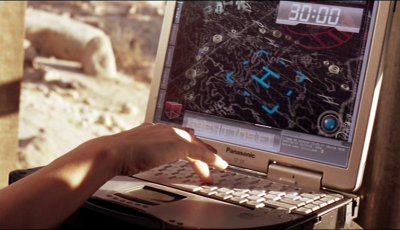No, there are two sizes bigger than Romex® 6/3 which are a 4 AWG and a 2 AWG that come in a three conductor version only. Each of the 3 different sizes has 3 THHN electrical wires with insulation and one bare copper ground wire without insulation. All 3 versions come with a black outer jacket.
Romex® 6/3 is the most popular type of NM-B cable not including the circuit sizes of 14, 12 and 10 AWG. It’s common to run a Romex® 6/3 electrical cable to a new power source which gives a new barn or garage a certain amount of power to allocate throughout the lights and outlets in that new area. The 6 3 cable is also a common size to power up a new hot tub or spa inside of your home.
Be careful not to use Romex® when running power to anything outdoors even if it’s in conduit. You’ll have to upgrade to an MC cable or UFB cable which are both approved for outdoor and conduit use. UFB stands for Underground Feeder which is also approved as an underground cable without conduit or raceway.
Larger sizes of Romex® such as 4/3 and 2/3 are used when your new garage or barn need more power than a 6 AWG 3 conductor cable can offer. The larger the copper the more power it brings to a source. Once the power has been applied to the new electrical box it can be distributed to the different smaller sources that need power as well.
The only difference between an NMB cable and a UFB cable is the outer jacket. The rest of the cable remains the same in terms of characteristics. For example, both cables come with THHN wires and a bare copper ground wire. Therefore, both cables conduct the same amount of electricity. The difference comes with the amount of protection offered by the outer jacket. Romex® comes with a thin PVC jacket while UFB has a much more protective PVC jacket that surrounds each conductor individually. The NMB cable jacket can be penetrated by outdoor moisture and gasses while the UFB jacket cannot.
It’s wise to discuss your application with your supplier and your electrician to make sure you have ample power and ample protection based on the environment your cable will be placed in. You want to make sure you’re going to pass inspection which is much more important than saving a few bucks on the installation costs.






More Stories
Advantages of Hiring an Electrical Engineering Consultancy Firm
The Importance of File Slack to Digital Forensics and EDiscovery
Types Of Lockout Electrical Panel And Their Usage